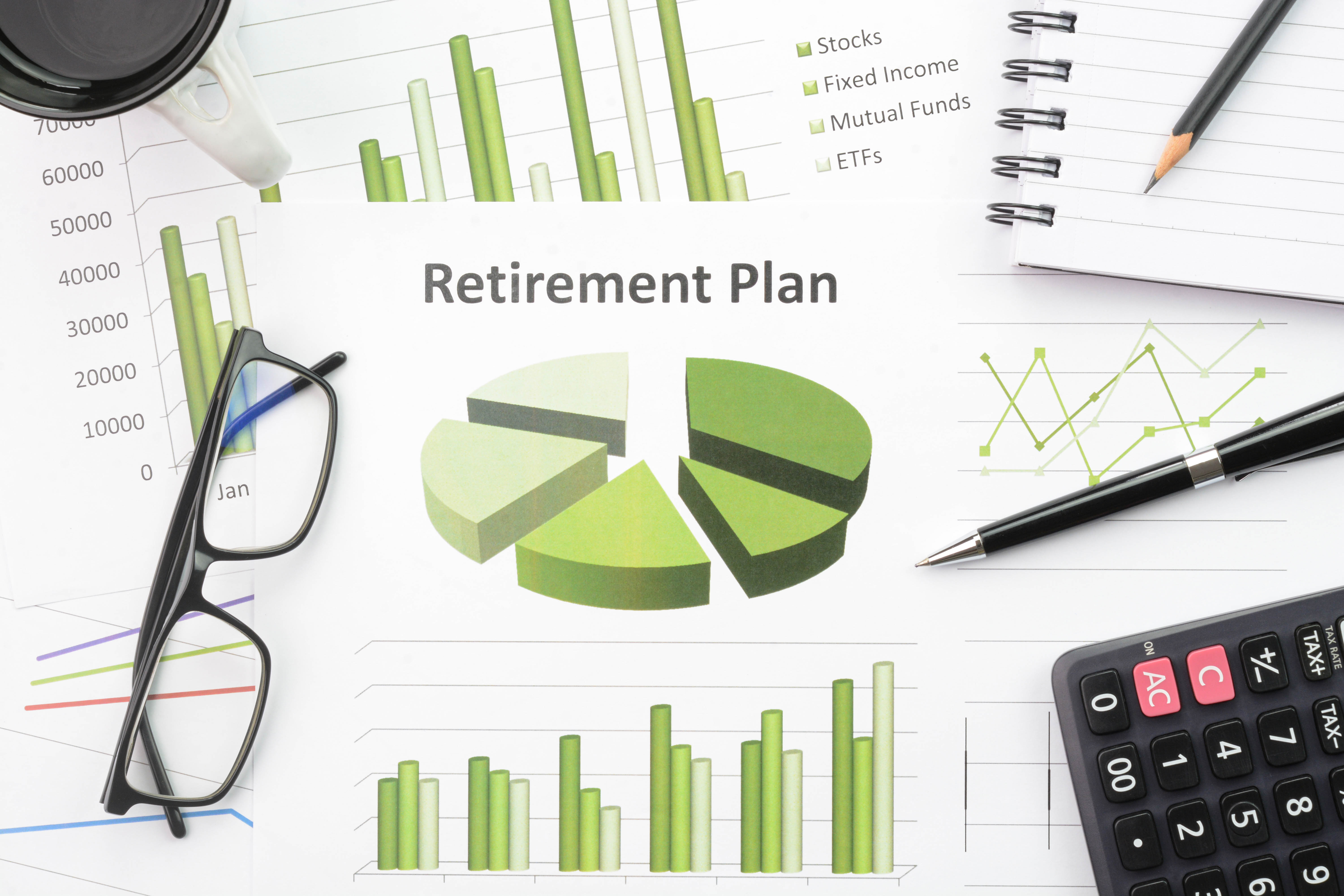Should I use a workplace pension or a SIPP?
Choosing the right home for your retirement savings is crucial – it could leave you thousands of pounds better off. We explain the differences between a SIPP and workplace pension
John Fitzsimons

Making the decision about where you save for retirement – and how you invest the money – can have a huge impact on the pot you eventually have to live on when you give up work.
If you’re employed – rather than self-employed – you’ll be automatically entered into a workplace pension scheme where you and your employer contribute a monthly amount.
It’s also possible to save for retirement in a personal pension scheme such as a SIPP (Self-Invested Personal Pension). Deciding on where you prefer to save depends on a number of factors – or you might use both.
MoneyWeek
Subscribe to MoneyWeek today and get your first six magazine issues absolutely FREE

Sign up to Money Morning
Don't miss the latest investment and personal finances news, market analysis, plus money-saving tips with our free twice-daily newsletter
Don't miss the latest investment and personal finances news, market analysis, plus money-saving tips with our free twice-daily newsletter
Here’s what you need to know about your options.
What is a workplace pension?
A workplace pension is a scheme offered by your employer as part of your employment contract. They will contribute to your pension – as long as you contribute too. The amount will be a percentage of your salary.
The more you earn the more they will pay in. By law the minimum amount for them to pay in is 3% and then you pay 5% (totalling 8%).
The scheme is usually offered by an external pension provider and your money will be invested according to the options available in that scheme – typically shares (equities) and bonds via investment funds.
Most workplace pensions are defined contribution schemes – where contributions from you and your employer are invested. The end value of the pot will depend on the performance of those investments.
A different type of workplace pension – known as a defined benefit scheme or final salary scheme – doesn’t rely on stock market performance. Instead the value of your annual pension is calculated according to the number of years you’ve worked there and your salary when you retire. These schemes are now pretty rare.
What is a SIPP?
A SIPP is a simple pension which has an all-important tax wrapper around your retirement savings.
SIPPs benefit from tax relief on contributions, meaning you can pay into your SIPP and the tax relief will be added, boosting your overall savings.
If you’re a higher rate or top rate taxpayer you can claim extra relief through your self-assessment tax return.
What is the difference between a workplace pension and a SIPP?
A workplace scheme is organised by your employer and is where they will make contributions on your behalf. A SIPP is a personal pension run by the individual and contributions are made by you.
The way that pension schemes work when it comes to retirement might differ too. Not all workplace pension schemes offer flexible retirement.
A workplace pension might have an investment strategy which automatically dials down the risk of how your money is invested. You manage the money held in a SIPP and can make changes when you decide the time is right.
What are the advantages of a workplace pension versus a SIPP?
The beauty of a workplace pension is that you don’t need to do anything towards the running of it (apart from paying in each month which happens automatically unless you opt out).
Your employer and payroll will take care of how your money is invested and will provide annual statements.
A SIPP requires you to do the legwork – unless you enlist the help of a financial adviser. You need to make the investment decisions and review your choices each year to make sure you’re on track.
The biggest advantage to saving in a workplace pension rather than a SIPP is undoubtedly the fact that you miss out on contributions from your employer who will pay a minimum of 3% of your salary.
What are the advantages of a SIPP over a workplace pension?
The main advantage of a SIPP over a workplace pension is having control over your investments. You have complete freedom to choose how and where your money is invested. You can either hand pick the funds yourself – or ask an adviser for recommendations. So a SIPP is well suited to those who want freedom and flexibility.
Another advantage is the choice of investments. While workplace pensions might only offer a handful of investment options, SIPPs tend to offer a wide range of investments to choose from. SIPP providers routinely offer access to thousands of investment funds.
Charges are another consideration. Investing isn’t free and pensions are no different. Charges on SIPPs are competitive whereas some workplace pensions (particularly much older pension schemes) can come with higher charges.
Options offered at retirement might be more flexible with a SIPP where converting it into a pension drawdown scheme and drawing on your money is straightforward. Not all workplace schemes offer flexible ways to gain access to your money at retirement.
We look at how to pick a SIPP in a separate article.
Can you have a SIPP and a workplace pension?
It’s possible to have multiple workplace schemes and a personal pension.
Rachel Vahey of AJ Bell says: “Once you have maxed out your employer’s contributions into your workplace pension, then you may want to think of other ways of boosting your pension savings. Saving into a SIPP on top of your workplace pension can mean building up your own pension pot you will always have, regardless of who you work for.”
While you can continue contributing to more than one at a time, it’s important that you keep within the pensions annual allowance.
For most people, the annual allowance is £60,000, or the amount of your annual salary – whichever is lower as you cannot pay more than you earn in a year.
The self-employed are entitled to all the same tax reliefs on pension contributions as employed people.
There are different annual allowance rules for higher earners. The annual pensions allowance reduces by £1 for every £2 earned over £260,000. This tapered allowance can’t drop further than £10,000.
There is also a different annual allowance if you earn less than £3,600 a year – or don’t work at all. In this instance your annual limit is £3,600, which means you can pay in £2,880 tax-free and the £720 tax top-up from HMRC makes it up to £3,600.
Can an employer pay into my SIPP?
Usually an employer would pay pension contributions into its own scheme set up for staff. But if you would rather they contribute to your SIPP – and they agree – then contributions can be made into your SIPP. You might prefer to do this so that all your pension savings are under one roof.
If you are self-employed and operate under a limited business you can opt to pay into your SIPP from the company bank account. HMRC rules allow pension contributions to be treated as an allowable business expense and offset against your company’s corporation tax bill.
We explain how to set up a pension if you're self-employed in another guide.
Can I transfer my workplace pension into a SIPP?
It is usually possible to transfer a workplace pension into a SIPP so that you can combine your savings and gain full control of how the money is invested.
This is a popular move among those who have built up a string of workplace pension schemes and prefer to have everything under one roof. It can also be beneficial if you have money in an old scheme which has high charges and limited investment options.
It’s also for those who are concerned about the poor performance of their work pension. A study of UK workplace pension funds revealed that more than half of pension pots do not hit their basic performance benchmark.
This means you could be hundreds of thousands of pounds worse off in retirement.
The Investing Insiders study revealed that 55% of the 276 pension funds analysed underperformed against the FTSE All Share tracker over a five-year period.
Vahey explains: “You can use your SIPP to consolidate your pension savings in one place. Once you leave an employer, you and they will no longer be paying into the workplace pension, leaving it lying dormant, and often forgotten and neglected. Instead, you can transfer it to a SIPP bringing your pension savings under one umbrella so that you are more easily able to manage them, as well as having a much clearer idea of how you have built up so far.”
When weighing up a pension transfer it’s important to do your homework, says Clare Stinton, head of workplace savings analysis at Hargreaves Lansdown.
“Most workplace pension types can be transferred to a SIPP, but it’s important to first check with your existing provider for exit fees and loss of benefits.
“An alternative option is to make partial transfers, periodically moving money from a workplace pension into a chosen SIPP, while leaving enough money behind to continue benefiting from employer contributions. Anyone considering this should be prepared to manage a bit more life-admin as it involves keeping tabs on two pots, not one. It’s also important to check for any exit fees or loss of benefits before making the move.”
For those in a defined benefit scheme, extra caution is needed – especially if your pot is worth more than £30,000.
Stinton notes: “In these cases, regulated financial advice is a legal requirement before transferring. This is to ensure people understand what they’re giving up, a guaranteed income for life that usually rises with inflation.”
Since pension scams are rife particularly when it comes to transfers, it’s important to make sure you’re dealing with a regulated firm.
Some 92% of cases reviewed by the XPS Scam Protection Service in June 2024 raised at least one scam warning flag, according to the latest XPS Scam Flag Index.
“Make sure your chosen SIPP provider is reputable – red flags include promises of early access, pressure to act quickly, or unusual investment opportunities – all classic signs of a potential scam,” warns Stinton.
“Transferring to access a pension early could not only cost you your life savings to a pension liberation scam but also land you with a hefty tax penalty from the HMRC for making an unauthorised withdrawal.”
Get the latest financial news, insights and expert analysis from our award-winning MoneyWeek team, to help you understand what really matters when it comes to your finances.
Holly Thomas is a freelance financial journalist covering personal finance and investments.
She has written for a number of papers, including The Times, The Sunday Times and the Daily Mail.
Previously she worked as deputy personal finance editor at The Sunday Times, Money Editor at the Daily/Sunday Express and also at Financial Times Business.
She has won Investment Freelance Journalist of the Year at the Aegon Asset Management Media Awards in November 2021.
-
 How gifting money this Christmas could lower your inheritance tax bill
How gifting money this Christmas could lower your inheritance tax billCash is an easy and quick present to give over Christmas – and it could protect some of your estate from the taxman down the line
-
 £100 contactless card limit to be lifted
£100 contactless card limit to be liftedConsumers will be able to set their own contactless limits from March 2026, under new rules from the Financial Conduct Authority